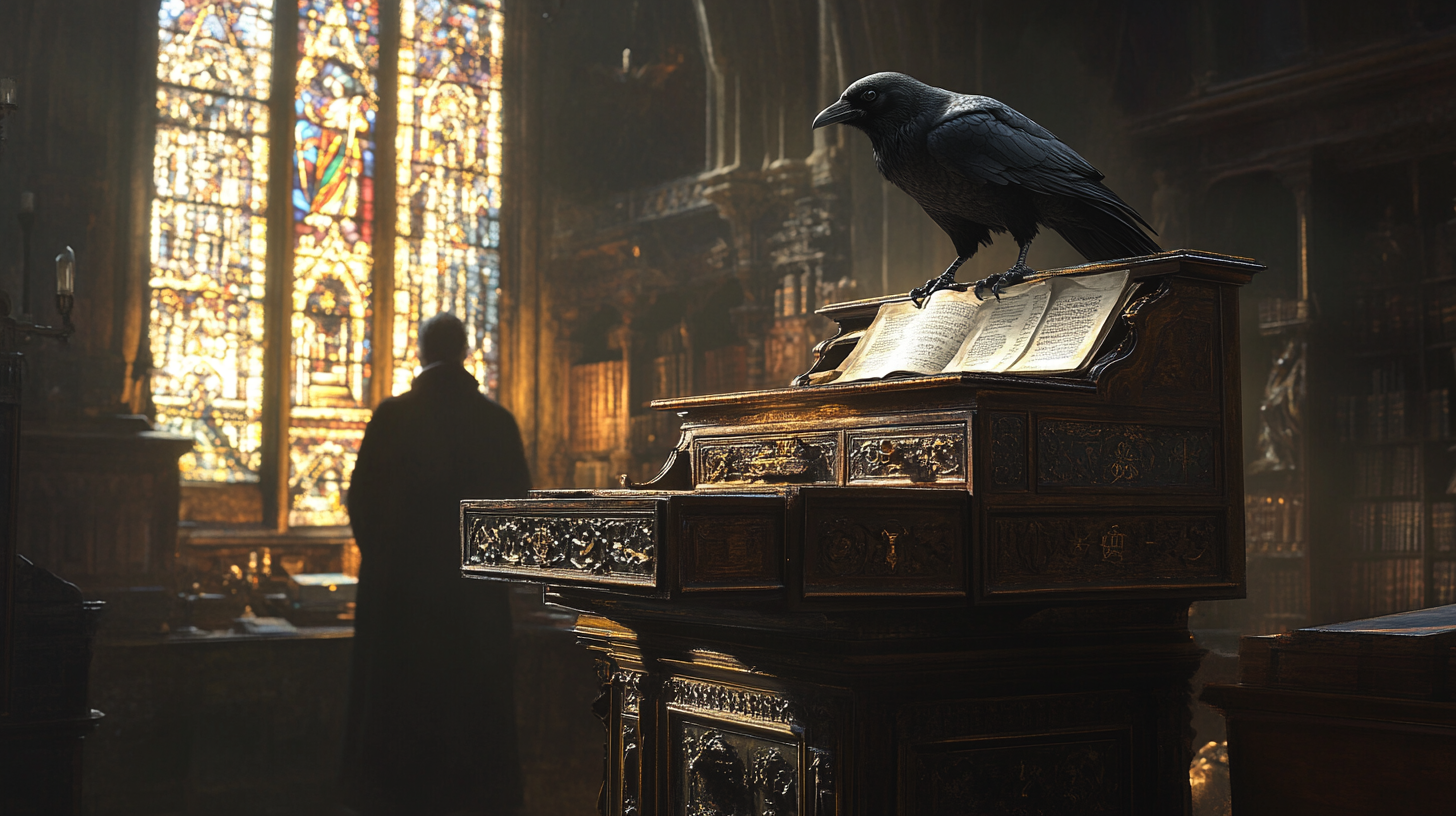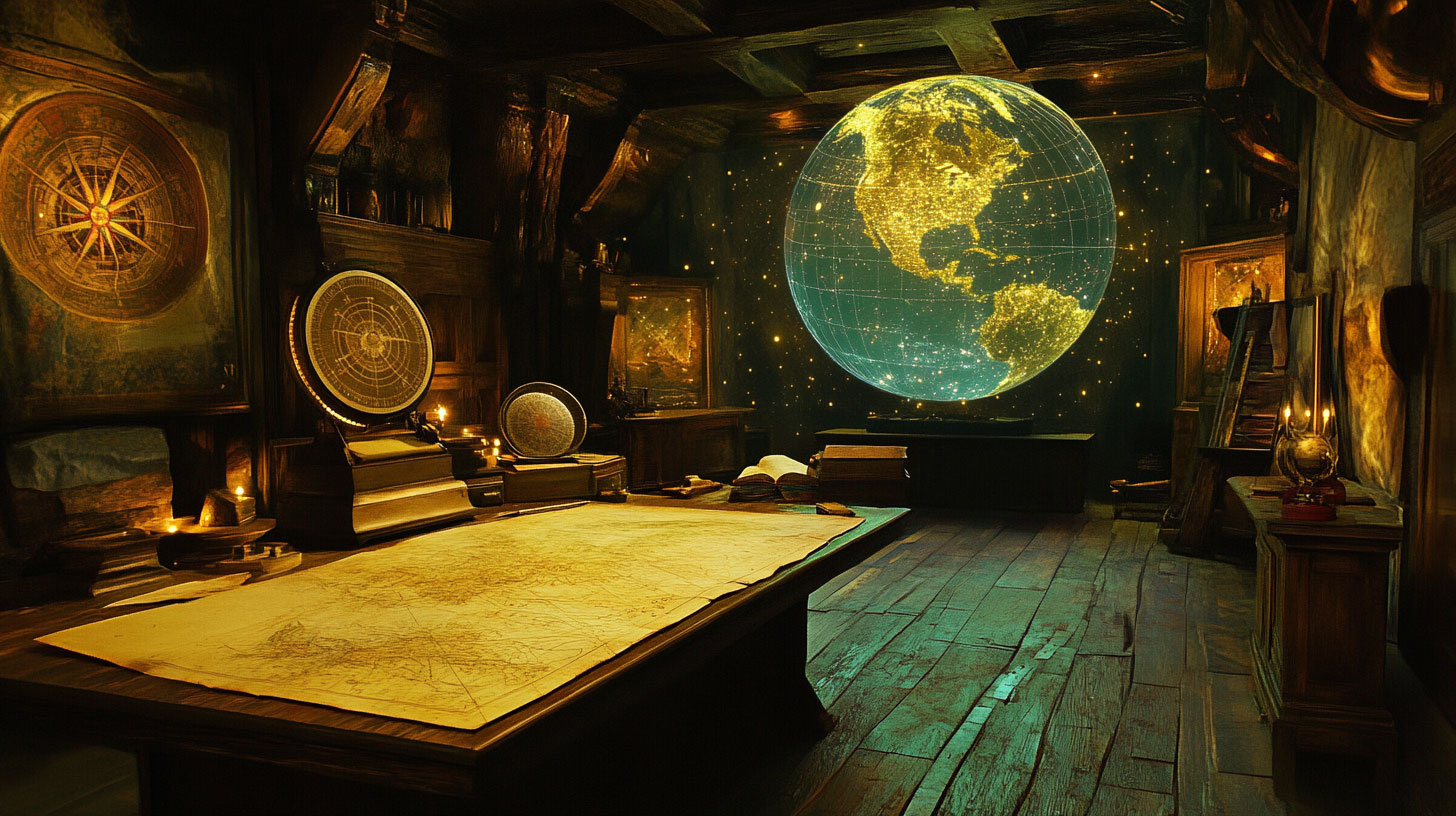By Jesse Lee Walth
Lewis Carroll’s enduringly enigmatic riddle, “How is a raven like a writing desk?”, posed by the Mad Hatter in *Alice’s Adventures in Wonderland*, has puzzled and delighted readers for over a century and a half. While Carroll himself offered a few whimsical answers (“Because it can produce a few flat notes”), a deeper exploration into history, etymology, and Carroll’s own Christ Church context reveals a remarkably coherent and profound solution. This solution speaks directly to the core functions of scholarship, the preservation of knowledge, and the intricate world of hidden information.
The key to this multi-layered puzzle lies in the shared concept of **custodianship of secrets and valuable information**, a role surprisingly embodied by both the raven and a specific type of furniture: the **”secretariat”** desk.
—
The Secretariat: A Physical Repository of Hidden Knowledge
Our journey into the riddle’s solution begins with the historical meaning of the “secretariat.” While today the term often refers to an administrative office or staff, in the early 19th century, around 1825 (a period that would have informed Carroll’s linguistic understanding), a “secretariat” was also a distinct piece of furniture. It was a sophisticated writing desk or cabinet, typically designed with an array of secure compartments, hidden drawers, and intricate locks. Its primary purpose was the safe storage of private papers, confidential documents, correspondence, and other valuable items. The very name derives from the Latin **”secretarius,”** meaning “one entrusted with secrets or confidential matters.” In essence, the secretariat desk was a literal, tangible “keeper of secrets,” a secure vessel for hidden treasures of information.
—
The Raven: A Symbolic Guardian of Mysteries and Royal Treasure
Parallel to the functional secretariat desk stands the raven, a creature steeped in profound symbolism across diverse cultures and mythologies. Ravens and their corvid kin are consistently associated with:
* **Secrets and Hidden Wisdom:** Their intelligence, striking black plumage, and often solitary, watchful nature have led to their portrayal as carriers of hidden knowledge, omens, or even messengers from other, unseen realms. They are perceived as observers who “know things” but do not easily reveal them.
* **Insatiable Curiosity and Collection:** Corvids are renowned for their remarkable intelligence, problem-solving abilities, and an almost “insatiable” curiosity, frequently leading them to collect and cache shiny objects or food. This behavior metaphorically aligns with an “insatiable” drive to acquire, organize, and store, much like a meticulous scholar or an institution diligently collecting and safeguarding valuable information.
Most famously in Britain, this ancient guardianship role is powerfully embodied by the **Ravens of the Tower of London**. For centuries, a persistent legend has held that **if these ravens ever leave the Tower, the Crown will fall and Britain with it.** These specific birds are far more than mere wildlife; they are living symbols, deeply intertwined with the protection of the **Crown Jewels** and the very stability of the nation. They are seen as vigilant guardians of royal treasure and national destiny, representing priceless assets and national security. This grand historical association with the Crown’s most valuable possessions parallels the more intimate act of a “secretariat” desk holding personal or administrative valuables. Both the desk and the raven emerge as potent symbols of holding, protecting, and guarding that which is valuable and often concealed.
—
The Black Cassock: A Clerical Link in the Chain of Secrecy
The visual and symbolic connection between the raven and the “keeper of secrets” deepens significantly when considering Lewis Carroll’s own daily life. As **Charles Lutwidge Dodgson, he was a Mathematical Lecturer and, notably, a deacon at Christ Church**, having been ordained into the Church of England in 1861. As a deacon, Carroll would have routinely worn a **black cassock** for official clerical duties and often as standard clerical dress within the college.
This black cassock itself carries significant symbolism that resonates profoundly with our theme:
* **Color of Gravity and Mystery:** Like the raven’s deep, glossy plumage, the cassock’s dark hue symbolizes solemnity, humility, and a detachment from mundane, worldly concerns. It often hints at the sacred mysteries and profound spiritual knowledge it represents.
* **Custodian of Sacred Truths:** Clergy, in their cassocks, are traditionally viewed as the **keepers of sacred texts, theological truths, and the spiritual secrets of faith.** They are entrusted with conveying profound wisdom, interpreting divine guidance, and acting as messengers of spiritual knowledge to their flock.
The visual parallel between the intelligent, black-feathered corvid and the serious, black-robed clergyman strengthens the underlying theme of “keeping” and “communicating” profound, often hidden, knowledge. For Carroll, the constant presence of these black figures – both the symbolic raven (or chough) and his own clerical attire – could subtly intertwine in his subconscious, reinforcing the pervasive idea of a repository of secrets.
—
Christ Church Choughs: From Wolsey’s Royal Ambition to Henry VIII’s Crowned Treasure
This multi-layered solution gains even greater resonance when viewed through the lens of Lewis Carroll’s deep connection to **Christ Church, Oxford**, where he spent the majority of his adult life. As a mathematician and deacon, Carroll lived and worked within its hallowed walls, an environment where the symbolic corvid finds its most direct and personal manifestation, and where the college’s very founding story mirrors themes of guarded knowledge, immense wealth, and shifting power.
The **Coat of Arms of Christ Church**, prominently displayed throughout the college, notably features **two Cornish Choughs**. This heraldic device, a shield containing various symbolic elements, visually represents the college’s unique and dramatic lineage:
* The **chief (gold upper section) of the shield features a prominent red rose in the middle, flanked by two black birds with striking red legs and beaks, which are Cornish choughs.** This upper section directly represents the personal arms of **Cardinal Thomas Wolsey**, who originally founded the college as “Cardinal College” in 1525.
* The larger, lower part of the shield, the **main field, is white (or silver) and prominently displays a black cross raguly** (a cross with jagged, uneven edges). Superimposed on the center of this cross is a **red lion passant guardant** (walking with one paw raised and its head turned towards the viewer), and in each of the four quadrants created by the black cross are **blue leopard or panther’s heads**, depicted front-facing with their tongues extended. This lower section unequivocally represents the arms of **King Henry VIII**.
While distinct from the common raven, choughs are members of the same **Corvid family** and share many of the characteristic traits that lend themselves to the “keeper of secrets” archetype: intelligence, black plumage, and a propensity for collecting.
The college’s foundation itself holds a powerful narrative of ambition, immense wealth, and the ultimate authority of the Crown over all “treasures.” Cardinal Wolsey, as King Henry VIII’s chief minister and Lord Chancellor, wielded immense power and was intimately involved in the **Crown’s finances and the royal treasury**. He masterfully devised taxes and managed the vast sums required for Henry’s grand ambitions. Wolsey himself amassed a colossal personal fortune, second only to the King’s. However, his personal wealth, including his grand collegiate project, was ultimately considered subject to the King’s supreme authority.
Following Wolsey’s dramatic fall from power in 1529 (a period famously tied to King Henry VIII’s desire for an annulment and the subsequent “off with her head” fate of some of his wives), his unfinished college and its vast endowments were **seized by the Crown**. It was **King Henry VIII himself who re-founded the institution in 1546 as Christ Church**, uniquely combining it as both a college and the cathedral for the new Diocese of Oxford. This powerful transfer of ownership from Wolsey’s personal project to Henry VIII’s royal decree speaks volumes about the ultimate power of the Crown over such “treasures” of education, influence, and wealth. The college, therefore, inherently carries a history of being a prized and contested “treasure,” initially conceived by Wolsey to house intellectual and spiritual wealth, then absorbed into the Crown’s ultimate dominion.
It is highly probable that the omnipresent imagery of these black, intelligent corvids (the choughs) within his daily academic and spiritual environment would have subconsciously, if not consciously, informed Carroll’s imaginative world. As a scholar and deacon, Carroll himself was a quintessential “keeper” of knowledge – from mathematical principles and theological doctrines to the vast written heritage housed within the college’s libraries and archives. His roles as **Mathematical Lecturer**, **Curator of the Common Room** (managing confidential college affairs), and briefly **Sub-Librarian** (guarding precious texts) directly align with the “secretariat” function. Christ Church itself, with its rich, sometimes hidden, history, functions as a vast “secretariat,” safeguarding centuries of academic and institutional “secrets” or valuable knowledge, echoing the protection offered by the Tower ravens to the Crown, scaled down to the collegiate level.
—
Conclusion: More Than Just Nonsense
What initially appears to be a whimsical piece of nonsense, designed merely to confound, reveals itself, upon closer inspection, to be a sophisticated intellectual puzzle. Carroll, a master of logic, language, and playful ambiguity, meticulously embedded within his riddle a profound commentary on the nature of information, its guardianship, and the very institutions, both royal and academic, dedicated to its preservation.
The answer, therefore, is not a simple pun but a masterful convergence of historical usage, rich symbolic association (from the grand scale of the Tower of London to the personal clerical dress), Lewis Carroll’s own clerical and academic identity, and the specific, historically charged world of Christ Church, Oxford – an institution born from the ambition of Wolsey and ultimately shaped by the Crown’s supreme authority over all “treasures.” Both the raven (and specifically, the Christ Church Chough, a representative of its intelligent family, and more broadly, the Tower raven) and the secretariat desk, in their respective capacities, are indeed **custodians of secrets and valuable information**, transforming the Mad Hatter’s query into a delightful and deeply meaningful meditation on the very essence of the humanities.


